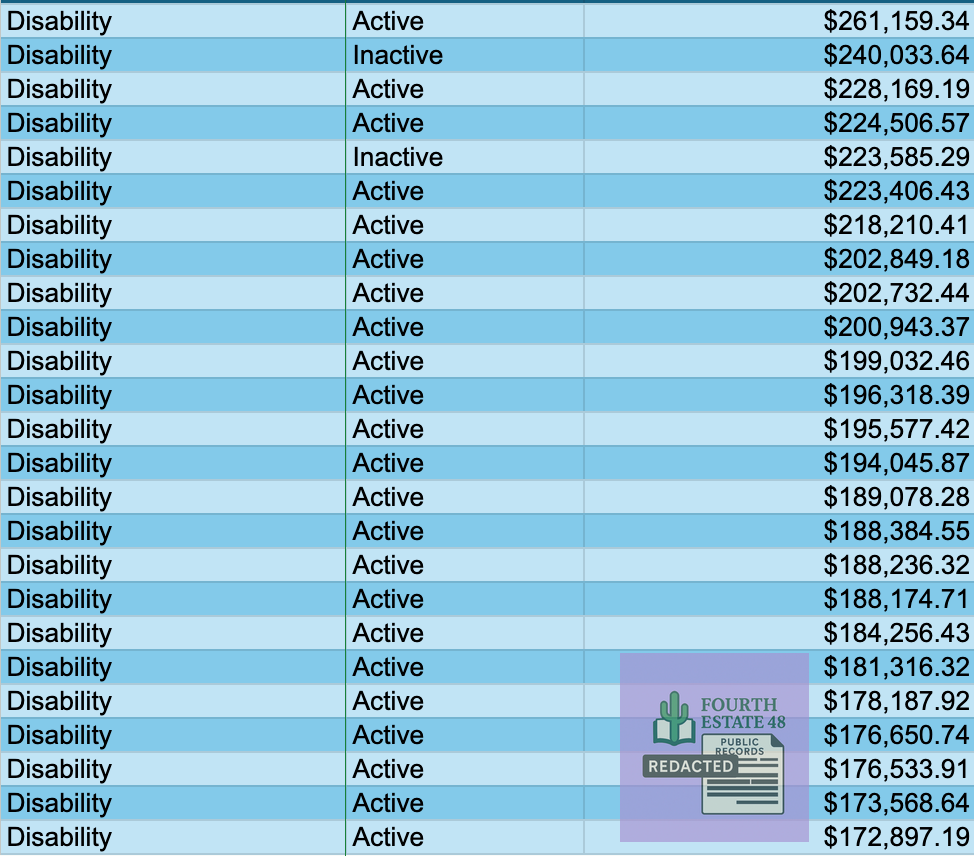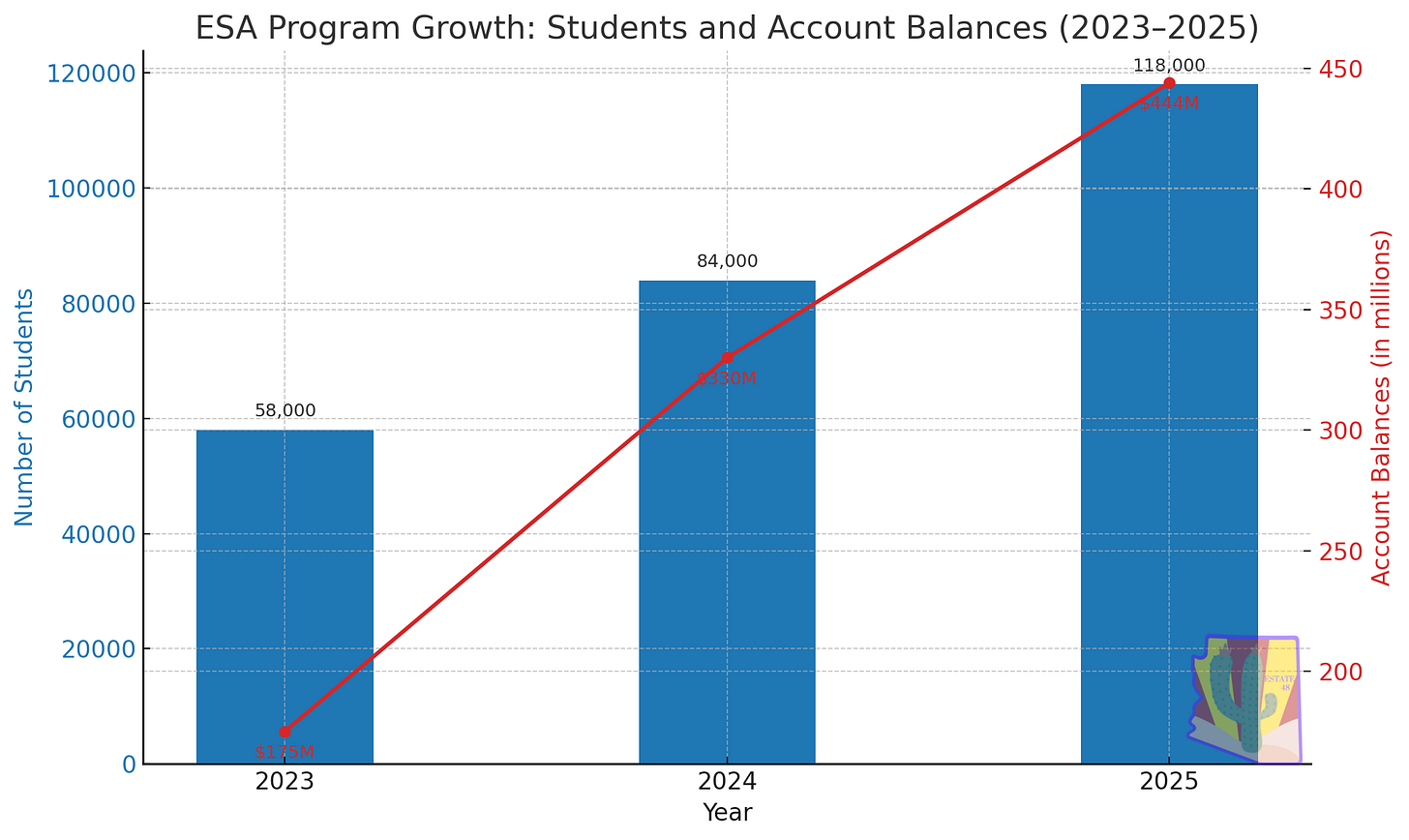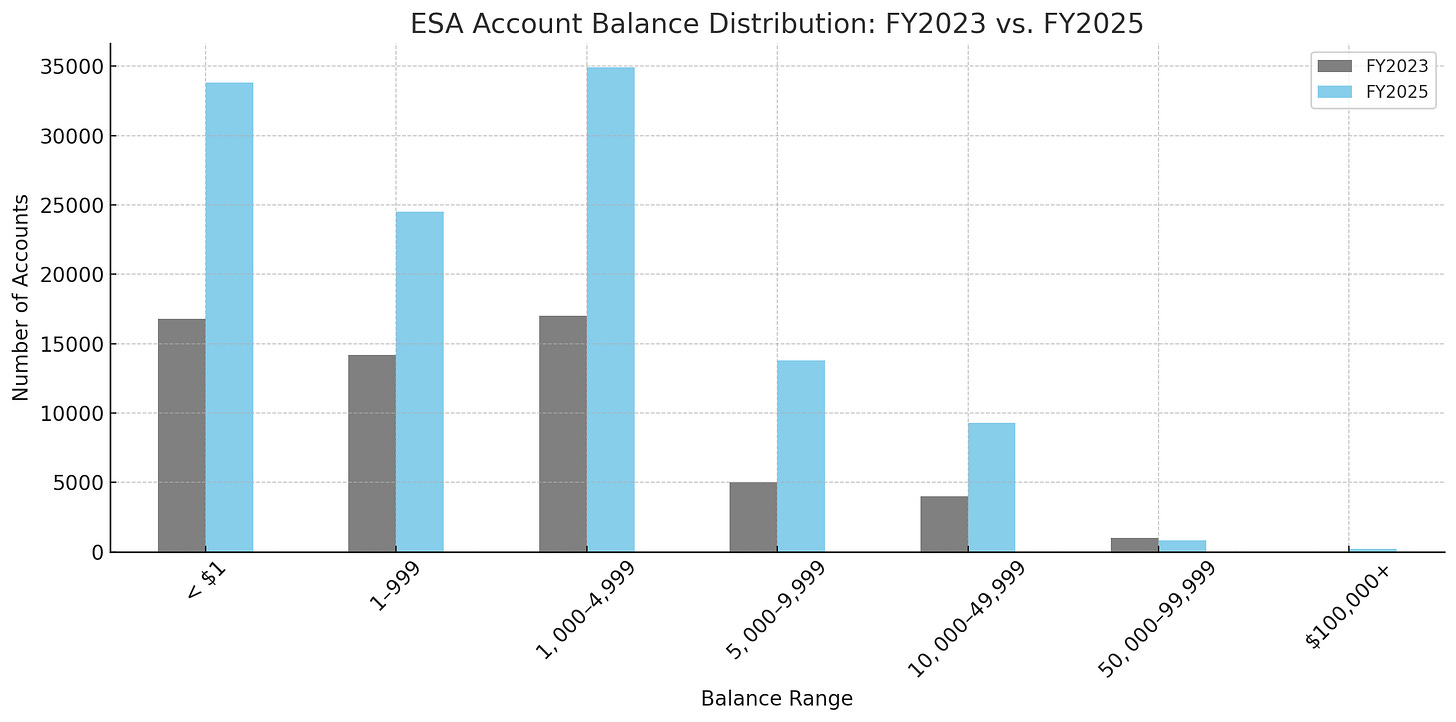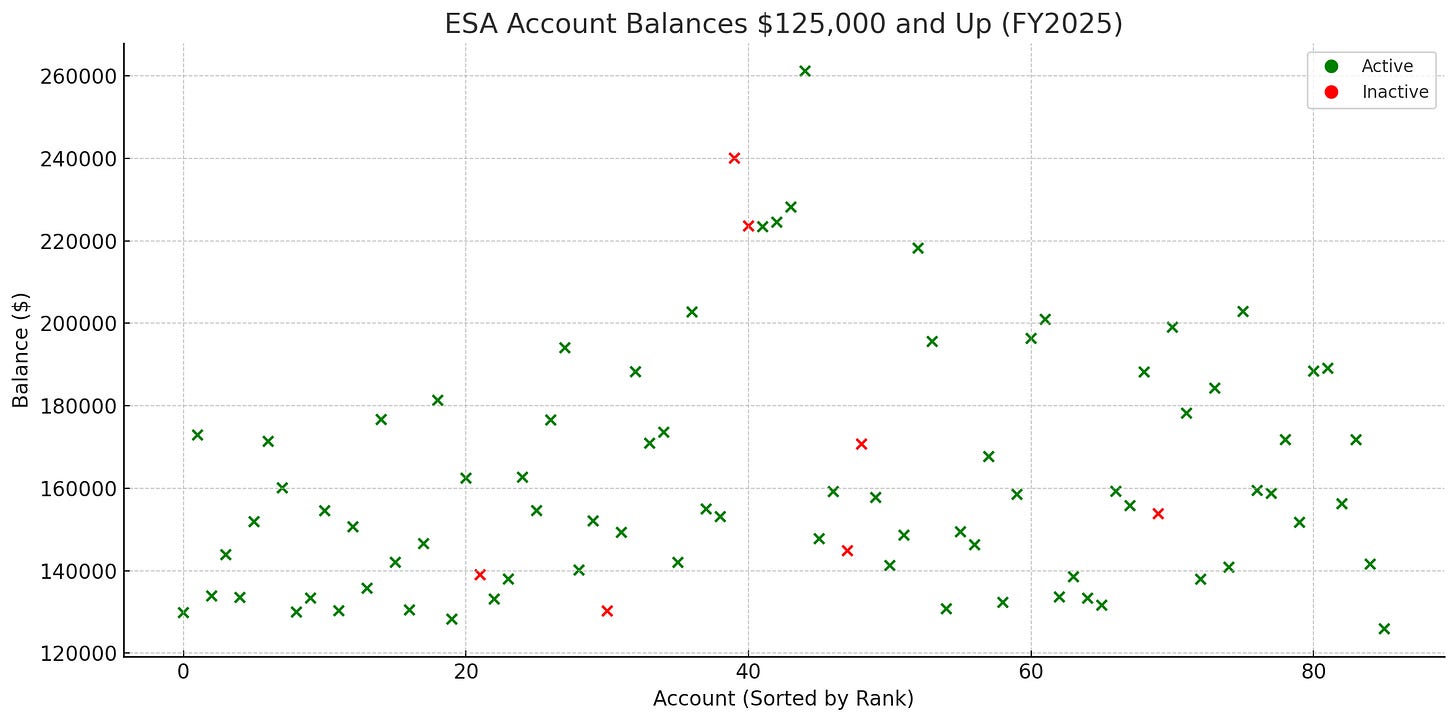More Than $49 Million in Inactive ESA Accounts as Total Unspent Funds Soar to $444 Million
23 inactive accounts have around or more than $100,000.

New records from the Arizona Department of Education reveal that $444 million in taxpayer money is sitting unused in Empowerment Scholarship Accounts (ESAs) — a sharp increase from previous years and a troubling sign of limited transparency and oversight in the state’s universal school voucher program.
The dataset, current through May 29, 2025, shows:
254,37 ESA accounts (22%) are inactive, holding a combined $49.5 million
192 accounts exceed $100,000, with the largest single balance topping $261,159
A 143% increase in two years.
There are 803 ESA accounts with balances between $50,000 and $100,000, up from 617.
10,278 accounts have balances over $10,000
There are 117,334 ESA accounts, which is a 95% increase from 2023.
The program has nearly doubled in two years, but the account balances are up 143% over that same time.
Total funds unspent across all active and inactive accounts: $444,293,700
The number of ESA accounts with less than $1 also nearly doubled from 16,802 in 2023 to 33,813 in 2025, while accounts with under $1,000 grew from about 31,000 to over 58,000, with their combined balance rising from $4.9 million to $8.45 million in just two years.
The overall figures represent a 154% increase since FY2023, when Fourth Estate 48 first reported $175 million in unspent ESA funds, based on records obtained through public records requests. That total rose to $360 million in FY2024, per an independent analysis by the Grand Canyon Institute.1
Looking at the data further, the average unspent amount per account has also gone up, despite more students entering the program. In 2023, the average unspent balance was about $2,900 per account. In 2025, it’s now roughly $3,785 per account.
This trend raises questions about whether families are accumulating state funds faster than they’re spending them — particularly as some parents stockpile funds for college or high-cost non-tuition items permitted under ESA rules.
ESA law does allow students to retain funds for up to four years after high school graduation to use for college or postsecondary education. If no qualifying expenses occur within that timeframe, the account must be closed and the balance returned to the state.
One area drawing increased scrutiny is the growing number of inactive accounts — those no longer in use but still holding significant public funds.
Under current Arizona law, ESA accounts don’t automatically close when they become inactive. Inactivity typically means that a parent hasn’t submitted expenses, renewed their contract, or shown any educational activity for at least one quarter. However, inactivity alone doesn’t trigger forfeiture of funds. According to A.R.S. 15‑2402(H), if a parent fails to renew the contract for three academic years, the Arizona Department of Education must notify them that the account will be closed in 60 days. If there’s still no renewal, any remaining funds in the account revert to the state’s general fund.
In other words, taxpayer funds can sit untouched for years — even in inactive accounts — before any legal requirement forces their return.
This lag raises oversight concerns given that tens of millions of public dollars are tied up in accounts with no current educational activity.
Even among active accounts, large balances continue to grow. Nearly half of the unspent funds — $217 million — are in accounts for students without disabilities, despite the program being originally designed for students with special needs or in underperforming schools.
This means those on universal expansion are not spending the money for school, and are likely letting them accumulate for their child’s college tuition.
23 inactive accounts have either close to a $100,000 account balance or more.
The highest total in a non-disability, inactive account is $27,491.31 compared to the highest active account for a non-disabled student at $42,730.58.
There are two of the highest total accounts that are inactive at $240,033.64 and $223,585.29.
The 2022 universal expansion of the ESA program, passed by a Republican-controlled Legislature and signed by former Gov. Doug Ducey, led to a sharp rise in enrollment and unspent funds. But the largest account balances still come from families who enrolled before that expansion — particularly those with students who qualify under disability or military criteria, where annual awards can exceed $30,000.
These legacy accounts have simply had more time to accumulate — and now represent a significant share of the total unused taxpayer funds in the program.
Despite the scale of funding and the longevity of some accounts, oversight of the ESA program has failed to keep pace.
While the program’s cost to the state now exceeds $1 billion annually, accountability remains limited. The Arizona Department of Education has not published any comprehensive audits of ESA account usage since the program’s expansion. There is no current statutory requirement for regular audits or academic performance evaluations.
Efforts to increase oversight have stalled:
Republican lawmakers refuse to negotiate, maintaining the program should remain flexible for families.
Democrats and Gov. Katie Hobbs, who’ve repeatedly called ESA reform a top priority, have struggled to gain any traction. Despite three years of promises, Hobbs has yet to secure even incremental reforms — a sharp contrast to the years-long GOP strategy that eventually secured universal expansion.
Regardless of whether one supports or opposes the ESA program, the lack of financial transparency should concern every Arizona taxpayer. With nearly a quarter of accounts inactive and tens of millions of dollars sitting idle, there are few safeguards to ensure these funds are used for educational purposes in a timely and equitable manner.
Without clear audit standards, annual oversight, or restrictions on long-term accumulation, the ESA program continues to operate with minimal accountability — despite commanding an ever-larger share of Arizona’s public education budget.
GCI used our data for its analysis. Anybody else who would like to, just let us know! (credit or subscriptions are appreciated in return.)






Money For Nothing
https://www.youtube.com/watch?v=wTP2RUD_cL0